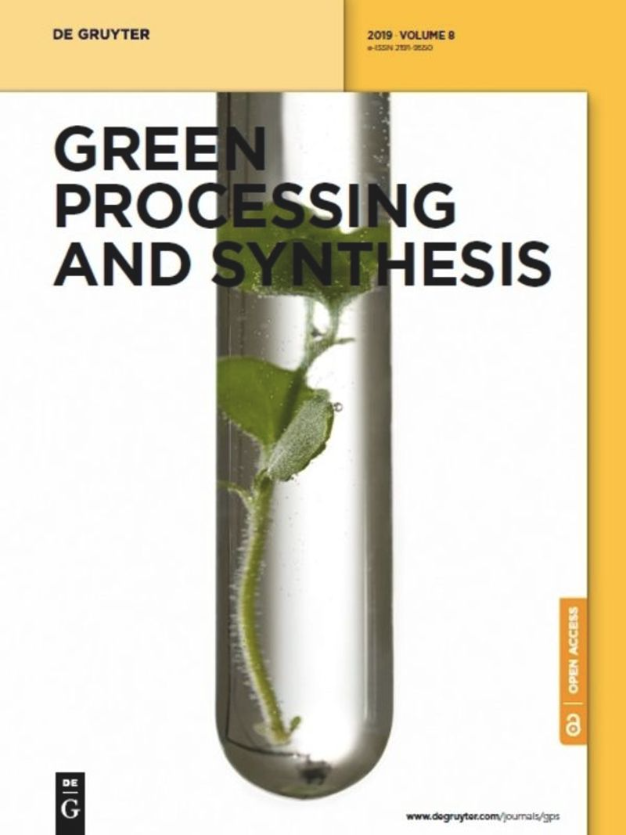Phytofabrication, characterization, and evaluation of novel bioinspired selenium–iron (Se–Fe) nanocomposites using Allium sativum extract for bio-potential applications
IF 3
4区 工程技术
Q2 CHEMISTRY, MULTIDISCIPLINARY
引用次数: 1
Abstract
Abstract Green nano-chemistry is an advanced research route covering eco-friendly fabrication approaches for synthesizing bimetallic nanocomposites (NCs) to enhance their therapeutic properties. The current study aims to phytofabrication, characterization, and bio-potential evaluation of novel selenium–iron (Se–Fe) NCs by utilizing garlic extract. The morphological and physicochemical features of Se–Fe NCs were evaluated by UV–visible spectroscopy, scanning electron microscopy, energy-dispersive X-ray, Fourier transform infrared, X-ray diffraction, and Zeta potential analysis. The findings showed that garlic cloves extract was a promising capping and reducing agent for the formulation of the NC. To explore the antioxidant potential of a bioinspired Se–Fe NC, 2,2-diphenyl-1-picrylhydrazyl and reducing power assays were performed. Furthermore, antioxidant efficacy was confirmed through antimicrobial activities against clinical pathogens. Phytosynthesized Se–Fe NCs (25, 50, 75, and 100 ppm) showed a dose-dependent response. Higher concentrations of Se–Fe NCs impose a more potent antioxidant and antimicrobial potential. The astonishing findings suggest that phytochemicals in Allium sativum extract are useful reducing agents in the formulation of well-defined Se–Fe NCs, and such NCs could act as competitive inhibitors against pathogens. To the extent of our understanding, Se–Fe NC is the first time synthesized and demonstrates the distinctiveness of green chemistry and will give multifunctional applications in nano-biotechnology.利用大蒜提取物制备新型生物激发硒-铁(Se-Fe)纳米复合材料的制备、表征和评价
绿色纳米化学是一种先进的研究路线,涵盖了合成双金属纳米复合材料(NCs)的环保制造方法,以提高其治疗性能。本研究旨在利用大蒜提取物制备新型硒铁(Se-Fe) NCs,并对其进行表征和生物潜力评价。通过紫外可见光谱、扫描电镜、能量色散x射线、傅里叶变换红外光谱、x射线衍射和Zeta电位分析对Se-Fe NCs的形态和物理化学特征进行了评价。结果表明,蒜瓣提取物是一种很有前途的封盖剂和还原剂。为了探索仿生Se-Fe NC的抗氧化潜力,进行了2,2-二苯基-1-吡啶酰肼和还原力测定。此外,通过对临床病原菌的抑菌活性证实了其抗氧化作用。植物合成的硒铁NCs(25、50、75和100 ppm)表现出剂量依赖性。较高浓度的Se-Fe NCs具有更强的抗氧化和抗菌潜力。这一惊人的发现表明,葱提取物中的植物化学物质是有效的还原剂,在明确定义的Se-Fe NCs的配方中,这些NCs可以作为病原体的竞争性抑制剂。据我们所知,Se-Fe NC是第一次合成,它展示了绿色化学的独特性,将在纳米生物技术中具有多功能的应用。
本文章由计算机程序翻译,如有差异,请以英文原文为准。
求助全文
约1分钟内获得全文
求助全文
来源期刊

Green Processing and Synthesis
CHEMISTRY, MULTIDISCIPLINARY-ENGINEERING, CHEMICAL
CiteScore
6.70
自引率
9.30%
发文量
78
审稿时长
7 weeks
期刊介绍:
Green Processing and Synthesis is a bimonthly, peer-reviewed journal that provides up-to-date research both on fundamental as well as applied aspects of innovative green process development and chemical synthesis, giving an appropriate share to industrial views. The contributions are cutting edge, high-impact, authoritative, and provide both pros and cons of potential technologies. Green Processing and Synthesis provides a platform for scientists and engineers, especially chemists and chemical engineers, but is also open for interdisciplinary research from other areas such as physics, materials science, or catalysis.
 求助内容:
求助内容: 应助结果提醒方式:
应助结果提醒方式:


